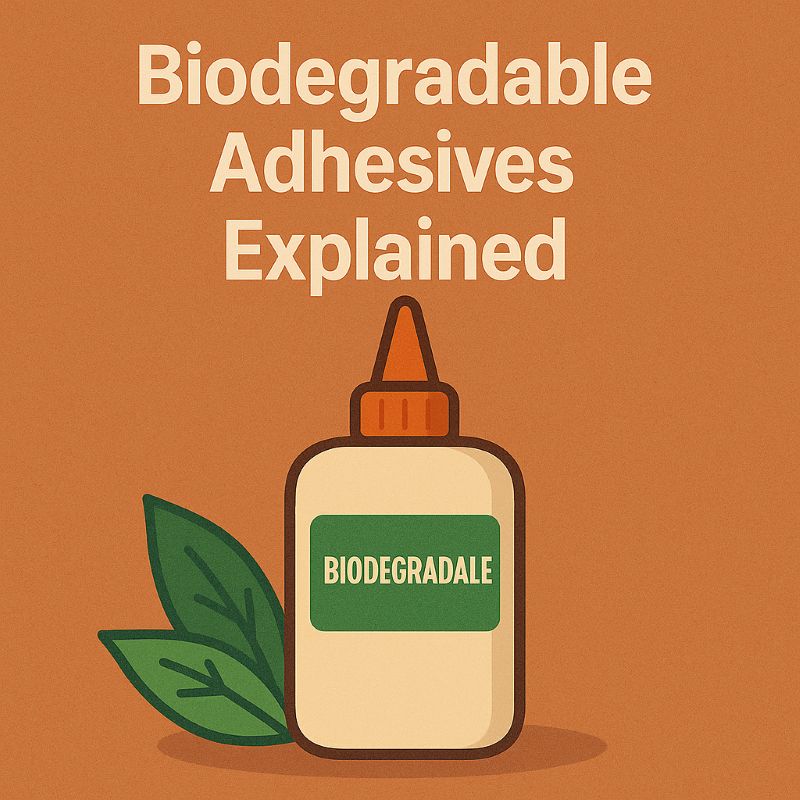
Biodegradable Adhesives Explained
Varieties of Eco-Conscious Adhesives
Significance of Biodegradable Materials
Techniques in Adhesive Production
Emerging Trends in Adhesive Science
Implementing Sustainable Adhesive Strategies
Innovative Future of Adhesive Solutions
Frequently Asked Questions (FAQ)
Biodegradable adhesives are reshaping sustainability practices by offering eco-friendly bonding alternatives. Unlike conventional adhesives, these formulations are derived from natural sources and decompose harmlessly over time. These materials are increasingly used in sectors like packaging and woodworking, helping reduce long-term environmental impact. By adopting such solutions, industries can minimize waste and align with eco-conscious standards.
Eco-conscious adhesives come in multiple varieties to suit different applications:
Packaging adhesives with a low ecological footprint
Woodworking adhesives designed for strength and biodegradability
Multipurpose bio-based glues for crafting or light industry
These formulations are typically plant-derived and formulated to degrade naturally, supporting sustainable manufacturing practices without compromising performance.
Biodegradable materials are vital to creating a circular economy. In adhesive applications, these materials replace petroleum-based inputs, reduce toxic residue, and lower overall environmental impact. Used in everything from consumer goods to industrial production, they enable businesses to meet eco-labeling standards and consumer demand for sustainable alternatives.
Modern adhesive production incorporates a variety of sustainable techniques:
Plant-based polymers like starch or polylactic acid (PLA)
Enzymatic processing to refine material properties
Sourcing renewable feedstocks to reduce fossil fuel reliance
These methods enable the creation of adhesives that meet durability requirements while supporting environmental goals.
Recent trends in adhesive development emphasize:
Resource circularity, using renewable and compostable inputs
Performance-focused degradation, maintaining bond strength while accelerating biodegradability
Cleaner production, lowering energy use and emissions
As industries shift toward environmentally responsible solutions, biodegradable adhesives are becoming essential in product design and packaging.
To implement sustainability in adhesive usage:
Evaluate application needs (packaging, woodwork, etc.)
Select the right biodegradable alternative for each use case
Train staff on environmentally sound usage and disposal practices
Monitor supply chain impact to ensure sustainability at scale
Strategic use of biodegradable adhesives allows companies to meet regulatory compliance and build brand trust through responsible environmental choices.
The future of adhesive technology lies in renewable, compostable, and recyclable formulations. New developments are focusing on multi-application, high-strength, and moisture-resistant biodegradable adhesives suitable for packaging, construction, and consumer goods. As research advances, eco-adhesives are poised to become industry standards, reducing reliance on conventional materials and aligning with global sustainability goals.
What are biodegradable adhesives?
Biodegradable adhesives are bonding agents made from natural, decomposable materials that reduce long-term environmental harm.
What types of eco-conscious adhesives are available?
Options include packaging adhesives, woodworking glues, and multi-use biodegradable formulations tailored to specific applications.
Why are biodegradable materials important?
They provide alternatives to petroleum-based materials, reducing environmental impact and supporting closed-loop production models.
What techniques are used to produce biodegradable adhesives?
Techniques include plant-based polymer use, enzymatic refinement, and sourcing from renewable resources.
What are current trends in adhesive science?
Trends include improved biodegradability, higher-performance bio-glues, and integration of sustainable sourcing in large-scale production.
How can businesses implement sustainable adhesive practices?
They can audit existing adhesive use, transition to bio-based alternatives, and promote eco-responsible usage policies.
How does consumer demand affect the adhesive market?
Rising awareness of environmental issues is pushing industries to adopt sustainable adhesive solutions across product lines.
What does the future hold for biodegradable adhesives?
Continued innovation will expand their use across industries, combining strength, durability, and environmental safety.